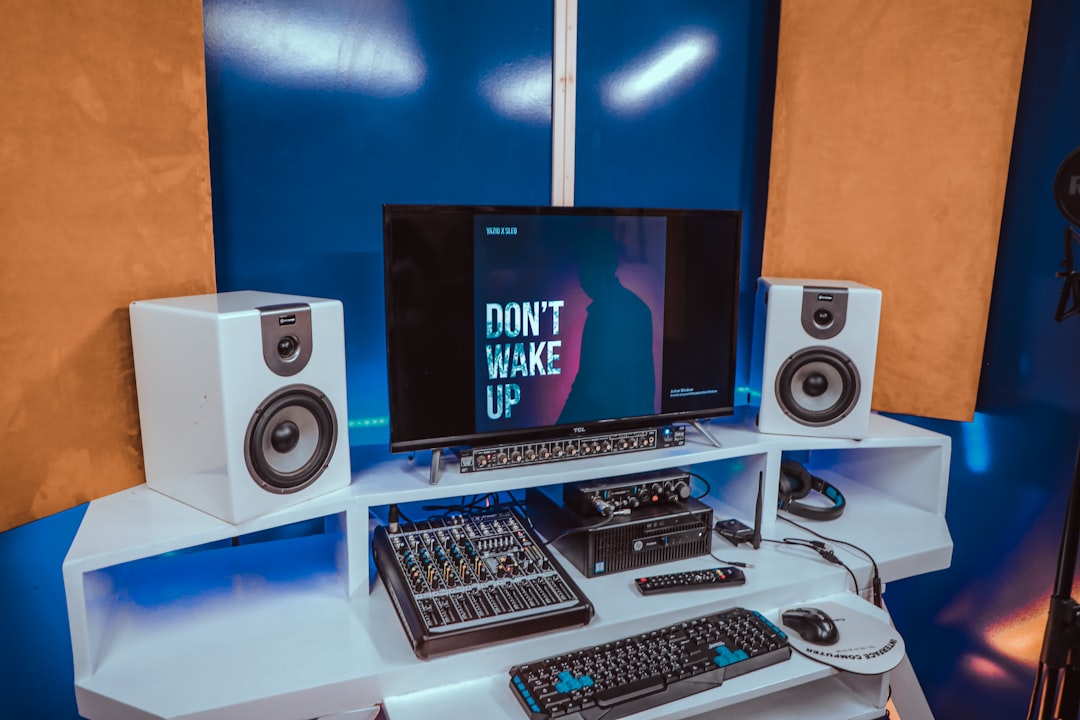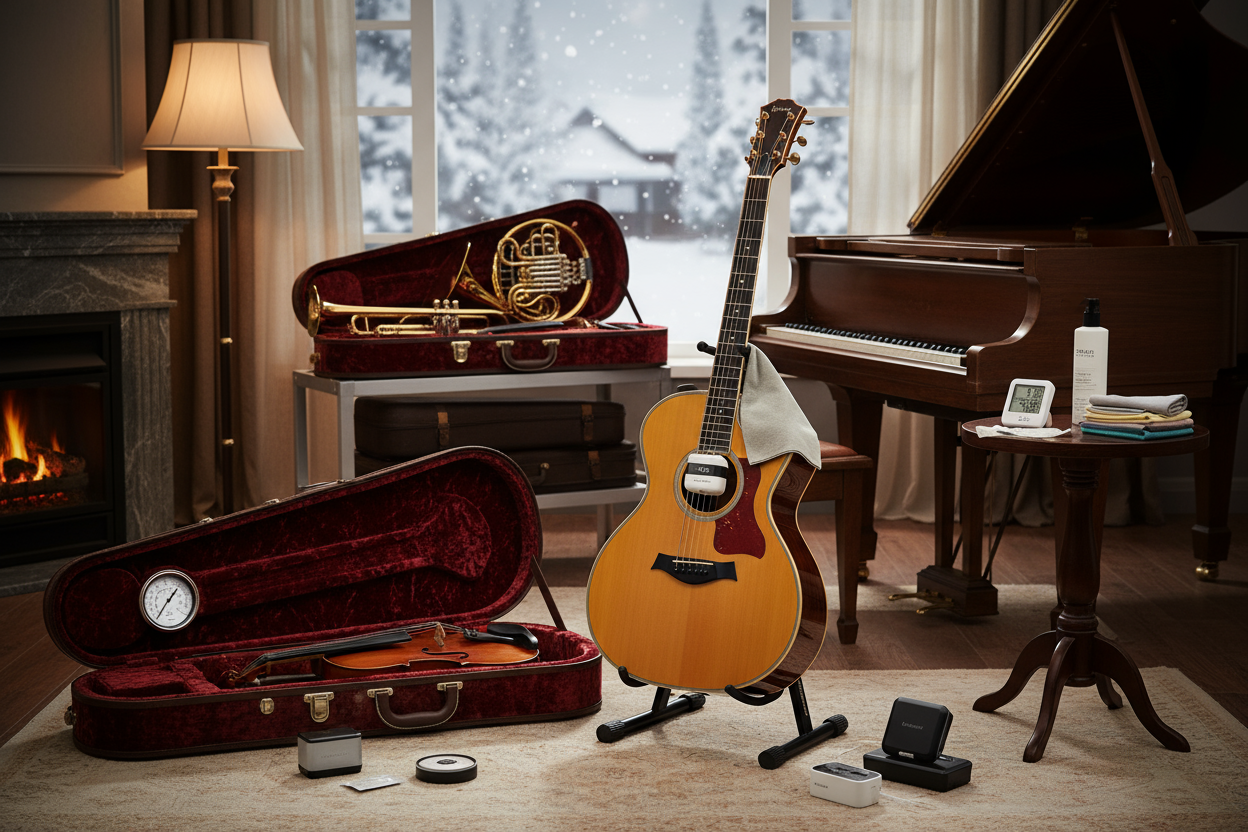How to Set Up a Home Music Production Studio: Essential Equipment and Optimization Tips
Building a home music production studio can unlock your creative potential with the right equipment, thoughtful acoustics, and a productive workflow. This guide provides everything you need to design a space that sounds professional and inspires music-making.
Key takeaways
- Choose a Digital Audio Workstation (DAW) that suits your style to centralize your production workflow.
- Invest in an audio interface with low latency and quality preamps for clear recordings.
- Accurate monitoring with studio monitors and headphones is essential for reliable mixing.
- Acoustic treatment and soundproofing improve recording clarity and reduce noise.
- Maintain organized files, consistent routines, and backup plans to boost productivity.
- Engage in ongoing learning and community interaction to grow your skills.
- Budget wisely by prioritizing foundational gear and upgrading gradually.
Table of contents
- 1. Essential Equipment for Your Home Music Production Studio
- 2. Acoustic Treatment and Soundproofing for Clear Recordings
- 3. Workflow and Productivity Tips for Music Production
- 4. Continuing Education and Community Engagement
- 5. Real-Life Inspiration: A Purpose-Built Family Studio
- 6. Budgeting Your Home Studio Setup
- 7. Conclusion: Crafting Your Ideal Home Music Production Studio
1. Essential Equipment for Your Home Music Production Studio
A solid home studio starts with the right gear. Selecting high-quality yet compatible components lays the foundation for professional results and enjoyable workflow.
Digital Audio Workstation (DAW): Your Creative Hub
The DAW is where all music creation happens—from arranging to mixing and mastering. Here are some popular choices to consider:
- Ableton Live – ideal for electronic production and live performance.
- Logic Pro – a feature-rich option for Mac users with strengths in tracking and mixing.
- FL Studio – beginner-friendly and great for beat making with an intuitive interface.
Try demo versions to find the DAW that feels intuitive and matches your creative approach.
Audio Interface: The Bridge Between Instruments and Software
An audio interface converts analog sounds from mics and instruments into digital data your computer processes. Key features to look for include:
- Clean, high-quality preamps for clear sound capture.
- Low latency to avoid delay during recording.
- MIDI input/output if you use MIDI devices.
- Reliable performance whether budget or premium.
Studio Monitors and Headphones: Accurate Listening Matters
Accurate monitoring helps ensure mixes translate well everywhere:
- Studio monitors deliver flat frequency response for honest sound representation.
- Closed-back headphones are great for recording vocals and isolating noise.
- Open-back headphones provide natural sound fields for detailed mixing.
Many producers toggle between monitors and headphones for best results.
Microphones: Capture With Clarity
Choose microphones based on recording needs:
- Dynamic mics: robust and great for loud sources like amps or drums.
- Condenser mics: sensitive and detailed, perfect for vocals and acoustic instruments.
- Consider polar patterns—cardioid mics help reduce background noise by focusing on sound from one direction.
MIDI Controllers: Hands-On Creative Control
MIDI controllers bring physical interaction to your digital instruments:
- Keyboard controllers suit melody and chord playing.
- Pad controllers excel for beats and live triggering.
- Control surfaces offer knobs and faders for precise DAW adjustments.
Cables, Stands, and Accessories: The Unsung Essentials
Don’t overlook the small but impactful gear:
- High-quality cables reduce noise and signal loss.
- Mic stands provide stability and ideal recording angles.
- Pop filters minimize vocal plosives for cleaner takes.
2. Acoustic Treatment and Soundproofing for Clear Recordings
Proper room acoustics are crucial to accurately hear your mixes and record cleanly. Untreated rooms create reflections, echoes, and frequency imbalances.
Why Acoustic Treatment Is Essential
Acoustic panels and bass traps help absorb and diffuse unwanted sound waves to preserve monitoring integrity and recording quality.
Cost-Effective Acoustic Treatment Tips
- Seal windows and doors with weather stripping to reduce external noise.
- Use rugs or dense carpeting to absorb floor reflections.
- Build DIY acoustic panels with wood frames and dense insulation like Rockwool.
- Place monitor isolation pads beneath speakers to reduce vibration.
- Add bass traps in corners to control low-end resonance.
Soundproofing for Better Isolation
Soundproofing blocks noisy sounds between rooms and prevents your music from disturbing others through:
- Staggered stud wall construction.
- Double drywall with damping compounds like Green Glue.
- Use of dense materials such as mass-loaded vinyl or cement board.
Though more complex and costly, soundproofing provides long-term benefits for recording environments.
3. Workflow and Productivity Tips for Music Production
A dependable workflow supports creativity and prevents frustration.
Keep Projects and Samples Organized
- Create DAW project templates to speed up session setup.
- Maintain folders with logically named sample libraries.
- Back up presets and plugin configurations regularly.
Stick to a Consistent Production Routine
- Set regular music-making times, even if brief.
- Define small goals to maintain motivation.
- Review and adapt your process to stay productive.
Safeguard Your Work With Backup Solutions
- Use external hard drives for scheduled backups.
- Employ cloud storage for real-time data protection.
- Label versions of projects clearly with dates for easy retrieval.
4. Continuing Education and Community Engagement
Expanding your knowledge and connecting with peers can accelerate growth.
Learn From Tutorials and Formal Programs
Access free tutorials online to master DAW features and mixing techniques. For structured learning consider programs like the Bachelor of Fine Arts in Music Production at Rocky Mountain College of Art + Design.
Find Your Tribe in Music Production Communities
- Join online forums and social groups to share projects and receive feedback.
- Attend in-person meetups for networking and collaboration.
- Engage with others to stretch your creative boundaries.
5. Real-Life Inspiration: A Purpose-Built Family Studio
A parent without professional training built a 14’x14’ studio for their children focused on acoustic integrity and creative comfort:
- Used staggered studs with Rockwool insulation to limit sound bleed.
- Applied rubberized cement and shingles for further sound isolation.
- Incorporated Green Glue between wall layers to minimize vibrations.
The space uses reliable, user-friendly equipment supporting their kids’ music production growth—a testament to thoughtful home studio design.
6. Budgeting Your Home Studio Setup
To stretch resources effectively, prioritize spending as follows:
- Computer: Ensure sufficient power with at least 8GB RAM and 1TB storage.
- Audio Interface: Critical for unlocking recording potential.
- Microphone: Start with a dynamic mic and upgrade to a condenser if desired.
- DAW: Choose one that fits your workflow; trial versions help decide.
- Monitors/Headphones: Purchase based on space and listening needs.
- Acoustic Treatment: Start DIY before investing in professional solutions.
- Accessories: Don’t neglect cables, stands, and pop filters.
Repurposing existing items like furniture or computers can reduce initial costs while maintaining quality.
7. Conclusion: Crafting Your Ideal Home Music Production Studio
Creating a home studio balances technical knowledge with intentional design. Begin with essentials, optimize acoustics, and develop habits to keep your creativity flowing. Remember, great music comes from experimenting, persistence, and community support—beyond gear alone.
By progressing thoughtfully and engaging with continuous learning and collaboration, your studio will grow into a personal creative sanctuary with professional sound quality.
FAQ
What is the best DAW for beginners?
Popular beginner-friendly DAWs include FL Studio for its intuitive design and Ableton Live for electronic music production. Testing demos will help you find the best fit.
Do I need studio monitors if I have good headphones?
While headphones are useful, studio monitors provide a flat, room-filling sound essential for accurate mixing. Using both ensures your mixes translate well across systems.
How can I improve room acoustics on a budget?
Seal gaps with weather stripping, use rugs or carpets, build DIY acoustic panels with insulation, add bass traps to corners, and use speaker isolation pads to reduce vibrations.
What is the difference between acoustic treatment and soundproofing?
Acoustic treatment improves internal sound quality by absorbing and diffusing reflections. Soundproofing blocks the transmission of noise in or out of the room to prevent disturbances.
How important is backing up my projects?
Regular backups protect you from data loss caused by crashes or corruption, preserving your work and peace of mind. Use external drives and cloud storage for redundancy.
Looking for quality home studio gear? Check out specialized retailers for affordable bundles combining audio interfaces, microphones, and monitors designed for home producers.







